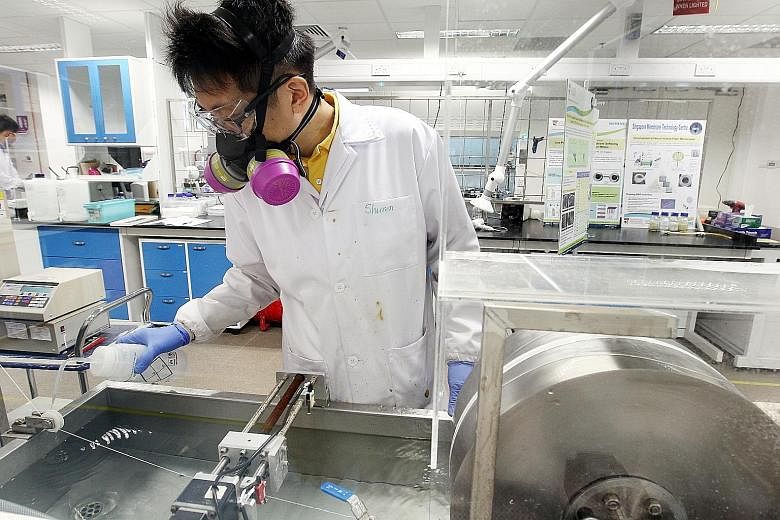Technologies developed by researchers here will now be used in China, to help recover valuable metals such as gold and silver from hazardous wastewater produced by heavy industries.
Two spin-offs from the Nanyang Environment and Water Research Institute (Newri) at Nanyang Technological University last week inked a $20 million deal with Chinese company Yangzhou Xiangfa Comprehensive Utilisation of Resources during Singapore International Water Week, a global platform to share and create innovative water solutions.
Under the agreement, which lasts three years, the Chinese company will be using membrane and chemical technologies developed with researchers here to recover valuable metals from industrial wastewater and sludge. The membranes concentrate the substances before they are extracted through chemical processes invented by local researchers. Companies that produce such wastewater and sludge include those from the metal finishing and electronics industry.
The agreement is just one example of how Singapore has become a thriving hub for water research and development (R&D).
Researchers here are not only developing technologies, but they are also exporting them to the rest of the world. Multinational companies are also setting up headquarters and multimillion-dollar R&D labs here.
Earlier this month, PUB chief executive Ng Joo Hee said that Singapore today has become the "Silicon Valley of water research", where real cutting-edge research on water is taking place.
-
$20m
Deal signed by two spin-offs from the Nanyang Environment and Water Research Institute with a Chinese company.
$340m
Value of overseas projects secured by Singapore companies in 2004-2005.
$1b
Value of overseas projects secured by Singapore companies last year.
Since 2006, the Government has committed a total of $670 million in R&D funding for the water industry. This has helped the country carve out strengths in membrane, desalination and sensor technologies.
The average annual value of projects overseas secured by Singapore companies has also increased.
It has grown from $340 million (2004-2005) to $1.4 billion (2006- 2012). Last year alone, Singapore companies secured overseas projects amounting to more than $1 billion.
Said Professor Ng Wun Jern, executive director of Newri: "Singapore has a pretty good reputation and there is trust that things developed and tested here have a better chance of delivering the desired results. This helps us introduce new developments to the market."
Singapore's good infrastructure, talent pool and sustained funding are among the reasons why multinationals are setting up their R&D labs here.
For instance, home-grown company Memstar, which is owned by leading Chinese membrane-based water treatment solutions provider Citic Envirotech, last week opened a $25 million R&D and manufacturing facility in Kian Teck Drive.
The new plant will double the production of Memstar's high-tech membranes - to a surface area of 10 million sq m - in a year. It also acts as a test bed for lab innovations, enabling faster commercialisation of products.
PUB also works directly with the industry to help commercialise upcoming technologies.
Local water company Visenti, for example, had its R&D team located at PUB training centre WaterHub in Toh Guan Road East in 2011, and this gave it access to PUB operations teams and industry contacts.
Today, beyond its islandwide deployment in Singapore, Visenti has exported its network sensing technologies overseas, to Hong Kong, France and Australia, said PUB.
Creating a space to pilot-test technologies around water is extremely important for the water business, noted Professor Joan Rose, this year's recipient of the Stockholm Water Prize - considered the industry's Nobel Prize.
"Singapore has created a space not only for R&D but also the testing of the technology. Once it's tested, that technology then has uptake in Asia and the rest of the world that you wouldn't have otherwise," said Prof Rose.
"You wouldn't see the uptake of new technologies in Asia and around the world if you didn't have a place like Singapore."


